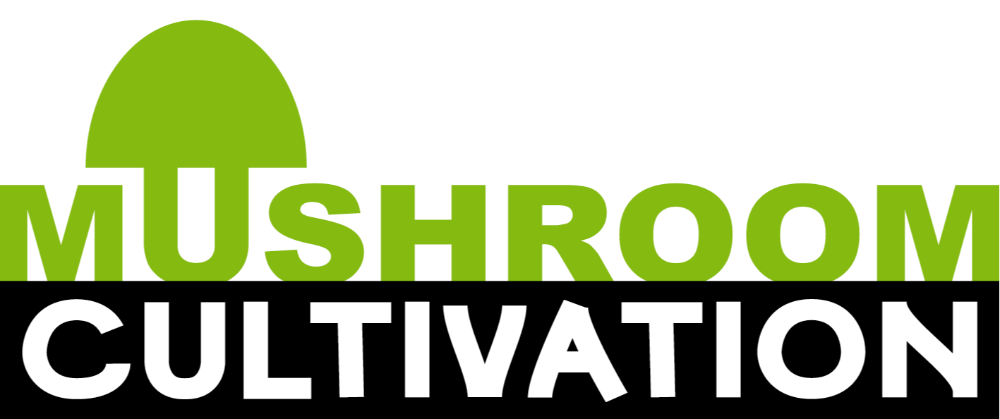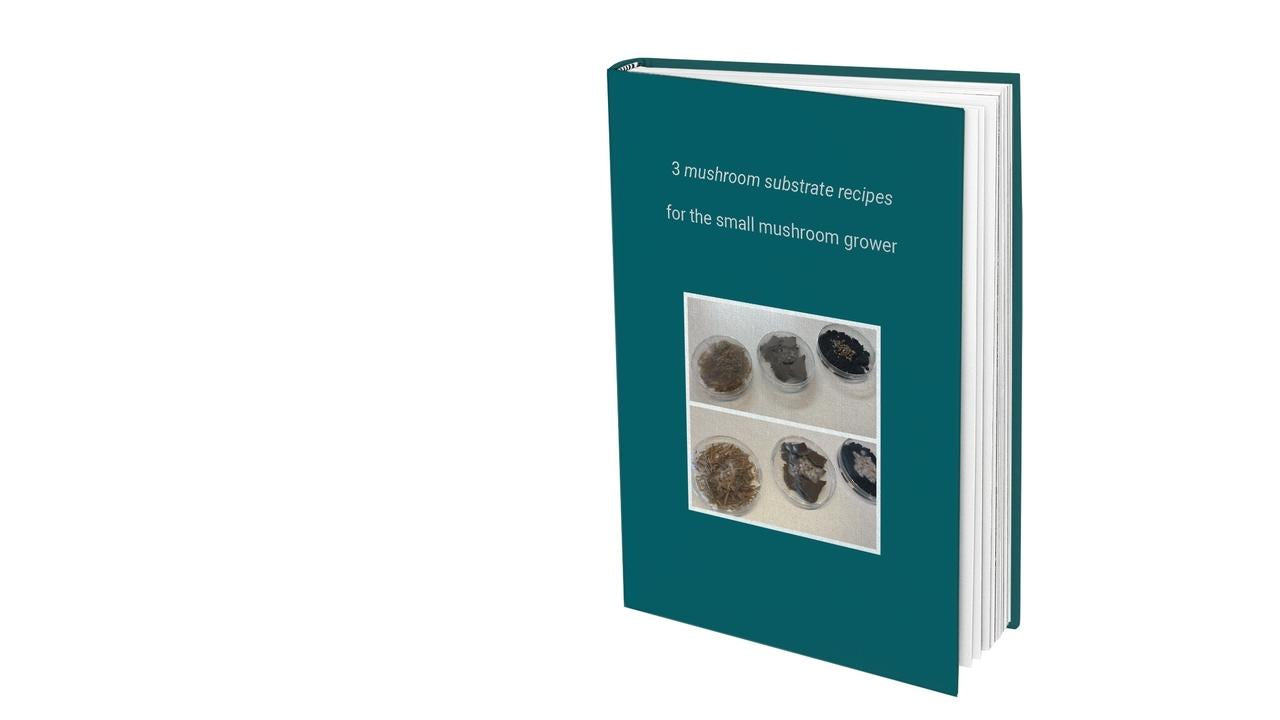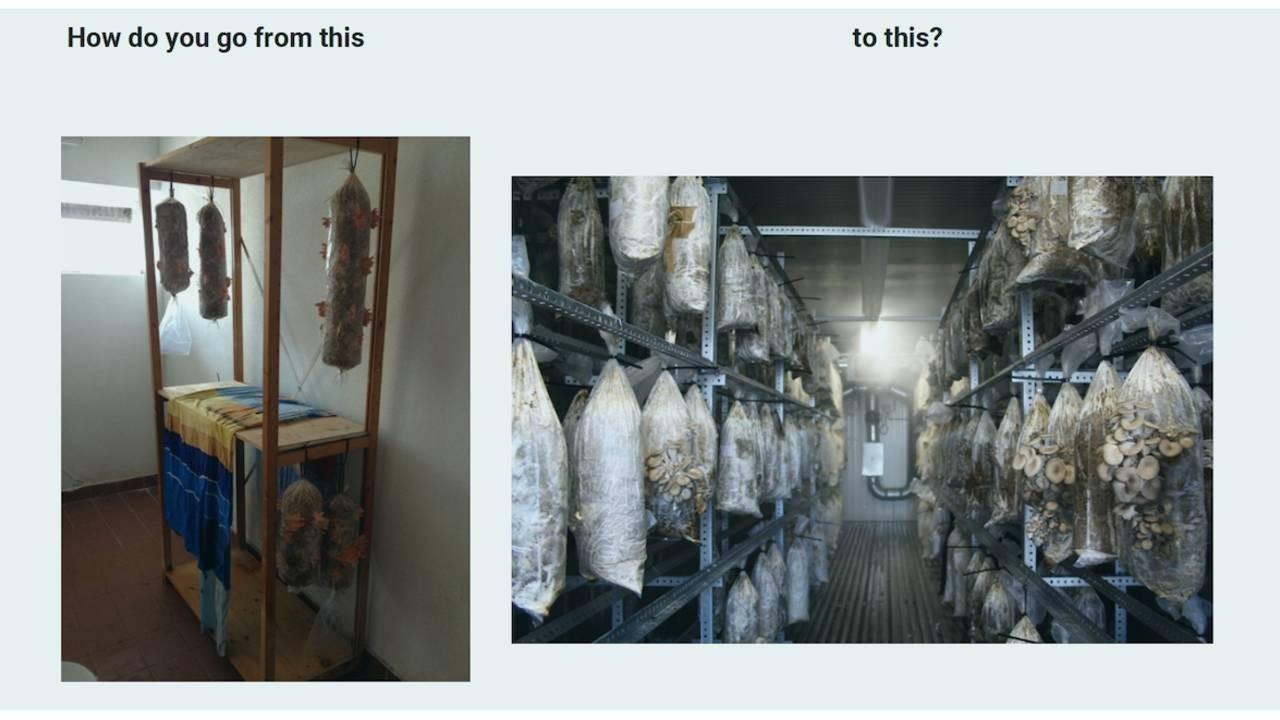After working 15 years in financial services, most of the time at insurance companies, I decided it was time for a change. I no longer felt connected with that branch, the way it treats its employees and its customers. I wanted to change my occupation and do something with sustainability. But I didn’t know what exactly. So, I decided to begin with change my network. Because I strongly believe in: It’s not what you know, but who you know. That choice eventually led me to start a mushroom farm based on open source principles in the beginning of 2013. In this blog post I share with you the lessons from the period before and the first years after the mushroom farm was founded.
Change your network
Urban farming is bigger than you might think. It is practiced by over 800 million people. According to my personal experience, most modern urban farmers and also the urban mushroom farmers, where not trained as farmers. Some had well-paying, but not satisfying jobs, at big companies. But most where basically not trained to be farmers. Their education teached them nothing on how to grow crops or produce food.
So how do you make that career jump to become a mushroom farmer? You start by changing your network. When I decided to quit my occupation in the financial services, I had over 700 contacts on my LinkedIn profile. Over 500 of them connected me to a branch I wanted to leave behind. So, I took on a broad range of volunteer work and board positions within networks and foundations related to the business I wanted to move towards.
Bounce your idea
I believe creation in all parts of life, so also for business concepts, goes in three stages. First you are inspired and think about an idea. Then after that idea has matured in your head for some time, you might tell a friend about your idea, that is the second stage. Then the last part is to manifest your idea in the physical world by acting on it, for example to write a business plan or to have someone make a logo. Think, speak, act.
I think [pun intended] that too much ideas stay in someone’s head either indefinitely or to long. Weather it’s doubt, insecurity, shame or any other reason that keeps you from speaking out, GET OVER IT. Share your thoughts, talk about your ideas.
A quote that is commonly attributed to Eleanor Roosevelt says:
“Great minds discuss ideas. Average minds discuss events. Small minds discuss people.”
There are many reasons to speak more about your ideas, matching this quote to become a great mind is not one of them. ;-) When you share your thoughts and your ideas, you are already two thirds on the way of creating it, making it happen. The sooner you start sharing, the sooner you will realize your project and maybe will find yourself a team member or two.
Team
And that brings me to the next item on the list on how to start your own mushroom farm. Gather a team. When I started talking about my ideas on starting an urban [mushroom] farm in an abandoned sub-tropical swimming paradise in the city center or Rotterdam by writing a blog about it, the idea immediately got some traction. Two people responded to my blog. One I didn’t know, the other I did. With the help of them, I got access to the swimming paradise.
When I was working to create my dream of building a business model out of collecting coffee grounds from the city center and turning it into mushrooms, the place I was located in attracted a lot of people from my network and beyond.
Two and a halve months into the project my current business associate checked in with me. I had never met him before, he found my blog post about starting a urban [mushroom] farm on page 19 of Google. He was doing research on the same idea. Although his first thought was: “Damned, someone beet me to it.” He decided to meet me for a talk. He never left and after seven years he is still the best business associate I ever met.
“If you want to go fast, go alone. If you want to go far, go together.”
We run the company with the two of us, but I have seen groups of up to three founders. Why is this important? Not only is it on tremendous added value to be able to bounce ideas, but investors, generally, tend to support companies which are run by a team than those who run solo. They trust companies with multiple founders and are likely to fund them more easily.
Having a good team is a great way of sharing responsibilities in different areas of your company. For example, a team with skills in mushroom cultivation, marketing & communication, sales and someone with some graphic design skills are of great benefit for start ups.
Start small
It might be tempting to start big, but I recommend you resist that urge. Most successful farmers I know, started small. The biggest oyster mushroom farmer in the Netherland started with the inoculation of one straw bale. There are a lot of advantages to begin small [end even not grow to big].
The tragedy of the commons is an example that specifically applies to farming of what happens when we grow too big and overexploit our surroundings. Next to that research shows that yields can reach nearly twice the yield of typical commercial vegetable farms.
I’m very inspired by what you can see in Cuba. There you can find that the most productive urban farms yield up to 20 kg of food per square meter, the highest rate in the world, using no synthetic chemicals.
By starting small you also eliminate a lot of risk involved with having a big agricultural company. Your production, marketing, financial, human resource management plus your legal and environmental risks are all at the lowest level. How great is it be able to learn and grow in an environment that is not riddled with the tension that comes with high investments and loans?
Location
Next up is to find a location for your farm. We get a lot of questions on what is cost to start a mushroom business and that depends to a large extend if you own the land that you want to start to grow mushrooms and if there are any structures on this land. It’s simple, all the money you are spending on rent, you are not earning. It will be big advantage if you own some land.
Same with the structures that might be on that land. If you have a barn or a warehouse, it might be interesting to use sandwich panels to create your growing units inside that structure. When using a basement, you need to be sure you have access to fresh air to ventilate your growing units. If you do not own any of these, we recommend that you invest in something that keeps its value over time. Something that is modular and mobile. In our experience the container is the ideal candidate for that.
You also need to take your relative location to your market and your raw materials into consideration. rotterzwam chose to be an urban mushroom farm. We grow mushrooms on a substrate of coffee grounds that we collect in the city. We even get paid to do that. Next to that we are delivering mushrooms to restaurants and we host workshops and tours on our farm. For these reasons, our farm is located in the city and close to the city center.
This location means extra cost, but these outweigh the lower cost of being outside the city but further from our target audience.
Knowledge
Although I strongly believe in: It’s not what you know, but who you know, you need some basic understanding of the mushroom cultivation process. You will need to know how spores influence the health of the people who are interacting with the mushrooms. How to prepare your substrate and what kind of ingredients you should use. What the local legal requirements and regulations are.
How to respond to contamination with green mold, bacterial infections or fungus gnats. When we started there where hardly any trainings aimed at small scale urban mushroom projects. That’s why we decided to started sharing the stuff we learned. Some for a fee and some for free.
rotterzwam has different ways we can help you start a profitable mushroom farming business. Every year we host 5 Mushroom Master Programs in our farm in the Netherlands. For those further away and not able to travel, we have online mushroom cultivation trainings and Online Mushroom Support.
Market
When you have decided what type of mushroom farm you want to be, you also know who your main target audience is. This is a great moment for your co-founder to step in and show sales and marketing capabilities.
We distinguish 5 types of mushroom farms. Each has a specific earning model. Rotterzwam is currently a type B1 farm and we are evolving into a type B2 farm. Main difference is a scale up in mushroom production. The type C and D have a very different target audience then type A, B1 and B2. The type A, B1 and B2 have a much easier task when it comes to reach new customers.
For us in the Netherlands, I find it easier to sell to local restaurants than to supermarkets with branches all over the country. The buyers that work for those supermarket chains and the intermediaries that operate between farmer and supermarket are always trying to get a better deal. Margins remain low in these kinds of environments where a lot of parties need to earn a living. Having a lot of small customers also makes you resistant to shocks. We found out during a fire in our farm and later in the corona crisis. We survived partly based on working on these principles.
Mushroom species
It is time to make a decision on what species of mushroom you are going to grow. The species you choose need to meet up with some requirements. It needs to be easy to grow in different volumes, have a relative short life span [fast formation of fruitbody], a relative long shelf life [so you can store them in the fridge for some time before you sell] and should be relative unknown.
In the Netherlands the oyster mushroom fits those criteria. It has a lifespan of 6 weeks that is much shorter than that of the shiitake that is about 12 weeks. It can be stored into the fridge up to 12 days, depending on the conditions in your fridge. The button mushroom [champignon] is so famous here, that people talk about us ‘growing champignons’ all the time. Not realizing that they are mixing the species with the genus.
We chose a species that are in the realm that are called “exotic mushrooms”. We cannot and do not want to compete with the big champignon producers in the Netherlands and Poland. Next to that the champignon has a very neutral taste and misses the meaty structure and umami taste of the oyster mushroom. And with the rising interest for a vegan and vegetarian lifestyle, we expect a growing demand for these mushroom species.
Cultivation method
When you have decided on a mushroom species, it’s time to look at the different cultivation methods. Shiitake for example are mainly grown on logs or sawdust. In the Netherlands there is accompany called Groene Takken [Green branches] that has created a business model on selling these logs. In fact, that was the first cultivation method rotterzwam used. But these logs need an outside environment, they prefer shady areas and need to be partially buried. We could not provide that in our swimming pool, so we abandoned this cultivation method.
In traditional agriculture, oyster mushrooms are grown on straw. We picked coffee grounds instead. The yield tends to be lower when you grow on coffee, because of more contamination with green mold, but we like the idea that we get paid to collect it. This way we can afford the loss in yield.
Typically, there are three remaining options for making a container to put your substrate in. Blocks, bags and bottles. Do a web search on “mushroom substrate block” and “mushroom bottle farm” to get an idea on how this works.
The bottle farm was not feasible because of the investments involved with the needed machinery to fill, empty and clean the bottles. At rotterzwam we chose to make bags. We have created a machine for perforating the tubular foil and after we have sealed them, we fill them with substrate and close with a tyrap.
Benefit society and the planet
Allow yourself to be led by the interest of this one planet we are living on. Don’t copy and paste a cultivation method from across the globe put check what is locally available. Don’t import substrate bags when you can make them yourself with some research on YouTube. Look into ways of giving your spend substrate a destination that benefits the soil. Educate your local community about the benefits of eating less meat and show how mushrooms can fit that lifestyle.
Create employment and give your employees the room to develop their skills and the freedom to discover how you can make your mushroom farm more profitable by eliminating the waste you find in every production environment. Don’t forget to innovate so you can grow your business organically and help other mushroom farmers apply your insights.
Hope this helps. Let me know if you have any questions. Drop me a mail at mushroom.cultivation@rotterzwam.nl We can always plan a call to discuss your plans and see how we can help your plans forward. I keep spots reserved in my calendar every Friday on even weeks.
Why listen to us and trust our opinion?
We started our urban mushroom farm early 2013. We have been sharing the things we have learned based on open source since the beginning. We published our first video on how we operate our urban farm on February 13th, 2014. Since then we have trained more the 40 entrepreneurs, a few 100 people visited our workshops and more than 40.000 people have learned to grow mushrooms with our Growkit.
We have survived a fire that destroyed our farm in May 2017 while our insurance didn’t cover fire. In 2018 we launched a successful crowdfunding and raised €398.500 to build our new farm. That farm has been operational since June 2019 and it is unique in its kind.
We have collaborated with several entrepreneurs and organisations over the past years. Our approach is always the same. We provide tested, verified and applied information on how to run a profitable small-scale urban mushroom farm. What we teach is also what you can see in action in our farm in the city center of Rotterdam. We continually update this information based on new insights that arise from our daily operation. That way the knowledge we share is based on what we experience and the things we run into.
The biggest and most successful urban mushroom projects in Europe, have trained with us. Among them are Beyond Coffee in Denmark, Hut und Stiel in Austria, Le Champignon de Bruxelles from Belgium and Helsieni in Finland. Will you join them by starting a mushroom farm in your city?





Leave a comment
This site is protected by hCaptcha and the hCaptcha Privacy Policy and Terms of Service apply.